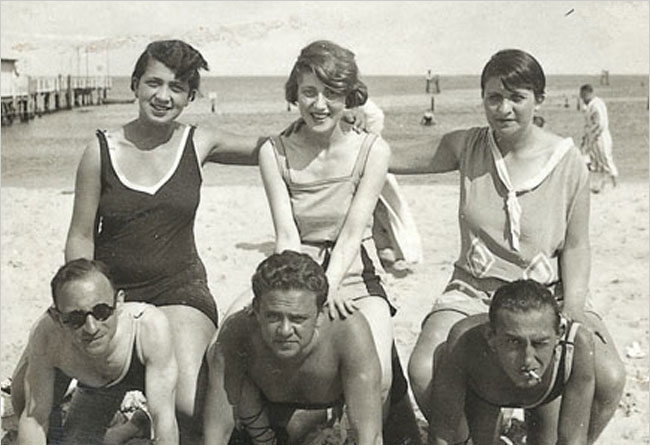It’s Friday, December 12, 2025 in Austin, Texas
How can I figure out my Jewish DNA?
More and more people are wanting to learn more about their family roots and origins. Researching Jewish Heritage and Jewish Genealogy is different than for most people.
This is due to several factors. First, Jewish DNA is less reliable for family relationships beyond Second Cousins and ancestors farther back than Great Great Grandparents. For centuries, Jews in Europe only married into other Jewish families in the same local region. As a result, the same families intermarried every several generations. This is called Endogamy for European Jewish DNA. Endogamy will skew predicted family relationships in DNA testing. This means that the standard predicted family relationships used by the major DNA testing companies is often inaccurate. A predicted 3rd cousin is as likely to be two to four generations farther back and thus far more distant.
 Thus only genealogical research will give one an accurate family history. You must always work backwards from your parents and grandparents using what you may already know, such as birth and death dates, places of residence, known aunts, uncles, cousins, etc. Once you establish what you do know it is time to start researching. FamilySearch.org is a useful, free, research website and makes a good place to start. Ancestry.com has the largest database of records and is an excellent resource, but be aware that much information requires a paid membership. Look for census records, which are available now for 1940 and back. Learn when your family arrived in the United States, but beware that census information records only what the census is told, and so can be inaccurate. Birth years and immigration years are often off, but can provide a starting place. Also, look to see if the census reports an immigrant ancestor as Naturalized, usually abbreviated “Na” on the census. If they indicate they were Naturalized as citizens, there will be the Naturalization papers available. Many are already online, but not all. The National Archives have this information available and will send copies to you for a nominal fee around $15. You may also need to ask for them from the State Court where they were nationalized and sometimes the County Court where they lived at the time. Naturalization Petitions will contain an accurate birth year, place of birth, and for 20th century files, the date and ship of arrival. With the arrival year, you can search for passenger manifests for their arrival, which will often contain more birthplace information, nearest relatives and who they were going to in the US and that person’s relationship and address. If you get lucky, the Naturalization Petition will contain the name the immigrant used on arrival, but this is often not the case.
Thus only genealogical research will give one an accurate family history. You must always work backwards from your parents and grandparents using what you may already know, such as birth and death dates, places of residence, known aunts, uncles, cousins, etc. Once you establish what you do know it is time to start researching. FamilySearch.org is a useful, free, research website and makes a good place to start. Ancestry.com has the largest database of records and is an excellent resource, but be aware that much information requires a paid membership. Look for census records, which are available now for 1940 and back. Learn when your family arrived in the United States, but beware that census information records only what the census is told, and so can be inaccurate. Birth years and immigration years are often off, but can provide a starting place. Also, look to see if the census reports an immigrant ancestor as Naturalized, usually abbreviated “Na” on the census. If they indicate they were Naturalized as citizens, there will be the Naturalization papers available. Many are already online, but not all. The National Archives have this information available and will send copies to you for a nominal fee around $15. You may also need to ask for them from the State Court where they were nationalized and sometimes the County Court where they lived at the time. Naturalization Petitions will contain an accurate birth year, place of birth, and for 20th century files, the date and ship of arrival. With the arrival year, you can search for passenger manifests for their arrival, which will often contain more birthplace information, nearest relatives and who they were going to in the US and that person’s relationship and address. If you get lucky, the Naturalization Petition will contain the name the immigrant used on arrival, but this is often not the case.
Bear in mind, at this point, that it is very very common that the European Jewish immigrants will have changed their names after arrival, thus the name on the passenger manifest will be their birth name, not the same as the one on US records. There is a widely believed myth that names were changed by Immigration officials “at Ellis Island”. This is totally false. Passenger manifests were compiled at the port of departure and this manifest is what the immigration officials used for their records. Immigrants changed their names to assimilate into their new “American” lives. There were no rules for changing names at that time of the late 19th and early 20th centuries. “Usually” they used the same first initial or chose a close sounding English name. Yakov becomes Jacob, or Jack. Mendel becomes Mark, Martin or Morris. Roiza becomes Rose or Rosa. This is not always the case. In one instance, an immigrant born “Gersz Lejb” or Hersch Leib in English was known as Morris in the US, so one must think outside the box at this point. Gravestones can be an excellent source for the original Hebrew name and the father’s name.
Bear in mind that spelling of names and places was far more flexible than today. Moshe can be Moishe, Mosche or Moses. Town names were often written phonetically, so use the JewishGen.org Town finder to determine the original town name and exactly where the town was located. “Mezrich, Russia” on a passenger manifest will turn out to mean Miedzyrzec Podlaski, pronounced “Meszrich”, in Siedlce Gubernia, Poland. All of modern Poland, Lithuania, Belarus, Ukraine and Latvia were “Russia” prior to 1917. “Galicia” is now either modern Austria, Hungary or part of Poland, but will be “Austria” on turn of the century documents. Yiddish nicknames were often also used. Yakov would be Yankel for example. So again, the researcher must not be focused on “exact matches” for first names.
 Also, bear in mind that larger cities often gave their name to the regional “Gubernia” (something like a county, it was an Imperial Russian administrative district). “Warsaw” could mean the city, but was also the gubernia, so could really mean another town in the district, just as New York can be New York city, but also mean another city in New York State.
Also, bear in mind that larger cities often gave their name to the regional “Gubernia” (something like a county, it was an Imperial Russian administrative district). “Warsaw” could mean the city, but was also the gubernia, so could really mean another town in the district, just as New York can be New York city, but also mean another city in New York State.
Once you have established where the immigrant is from, when they were born and their birth names and father, you can start to research the European records. JewishGen.org is an excellent resource which is free to use in a limited manner, a $100 donation gives the ability to use more search parameters for narrowing the search. If your family is from Poland, JRI-Poland.org is an excellent free database, but a bit more limited than JewishGen. It is suggested to use both.
Sadly, the vast majority of Jews from Eastern Europe descent will “hit a brick wall” where information is no longer available from records, which will almost always be around 1780-1820. The reason for this is the vast majority of Jews prior to this period did not use family surnames. People were simply known as “Moshe son of David” “Sara daughter of Yankel” etc. It was only at that period that Russia and the Austria-Hungary Empire required Jews to adopt family surnames for census, tax, and military conscription purposes. Jews were free to adopt any name they wanted. Often they chose a town name, a profession, or other name.
It takes some practice and guess work to complete your family tree, but once you have done so, a DNA test can now help you locate unknown relatives, when your matches also have trees and common ancestors can be found.
The search can be fun, and there are many online groups dedicated to research in various Eastern European regions and towns. These groups are very useful for questions and assistance, and the reader is encouraged to engage them.
Happy Searching!
Rob Moshein





























 New Home Builder Website Checklist
New Home Builder Website Checklist 












